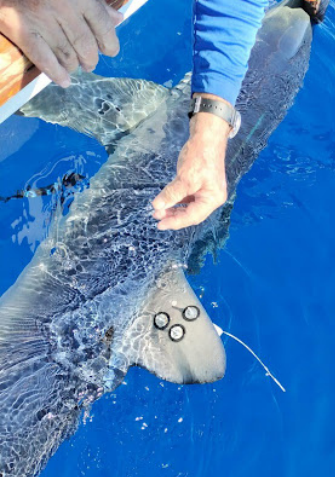UH Researchers Turn Sharks Into Oceanographers, In Two Oceans

Accepting Applications: University of Hawaiʻi at Mānoa (UHM) SOEST Dean
September 26, 2024
Three Finalists Selected for Position of HIMB Director
October 15, 2024UH Researchers Turn Sharks Into Oceanographers, In Two Oceans

Kim Holland Attaches A Bathygraph Tag to a Blue Shark in the Azores. Photo credit: Jorge Fontes, University of the Azores.
By Maria Frostic
Kim Holland, Research Professor at UH Hawaiʻi Institute of Marine Biology (HIMB) and founder of its Shark Research Lab, together with colleague at the University of the Azores, deployed the first ever bathygraph tag in the Atlantic ocean in recent weeks, on a 3-meter long blue shark near the island of Faial. Part of an expanding “Sharks as Oceanographers Program” funded by the Pacific Islands Ocean Observing System (PacIOOS), the bathygraph tags used in this study are the first to be deployed on any type of fish, and as the program name suggests, the tag effectively turns a shark into an oceanographer, enabling it to record ocean temperature as it roves the water column and transmit the data via satellite when it returns to the surface. The tags allow researchers to access the data in near-real time, and are designed to fall off after roughly four months.
“The bathygraph tags are an example of the increasingly sophisticated animal telemetry tools that are available to scientists,” explains Holland. “These tags are now able to tell us not only where the animal is, but they can also describe the environment that it is experiencing. In the future this will include parameters such as oxygen content and plankton density.”
See the full article here!




